Transportation | Renewable Energy | Water Efficiency | Energy Storage | Land Use | Energy Efficiency | Agriculture
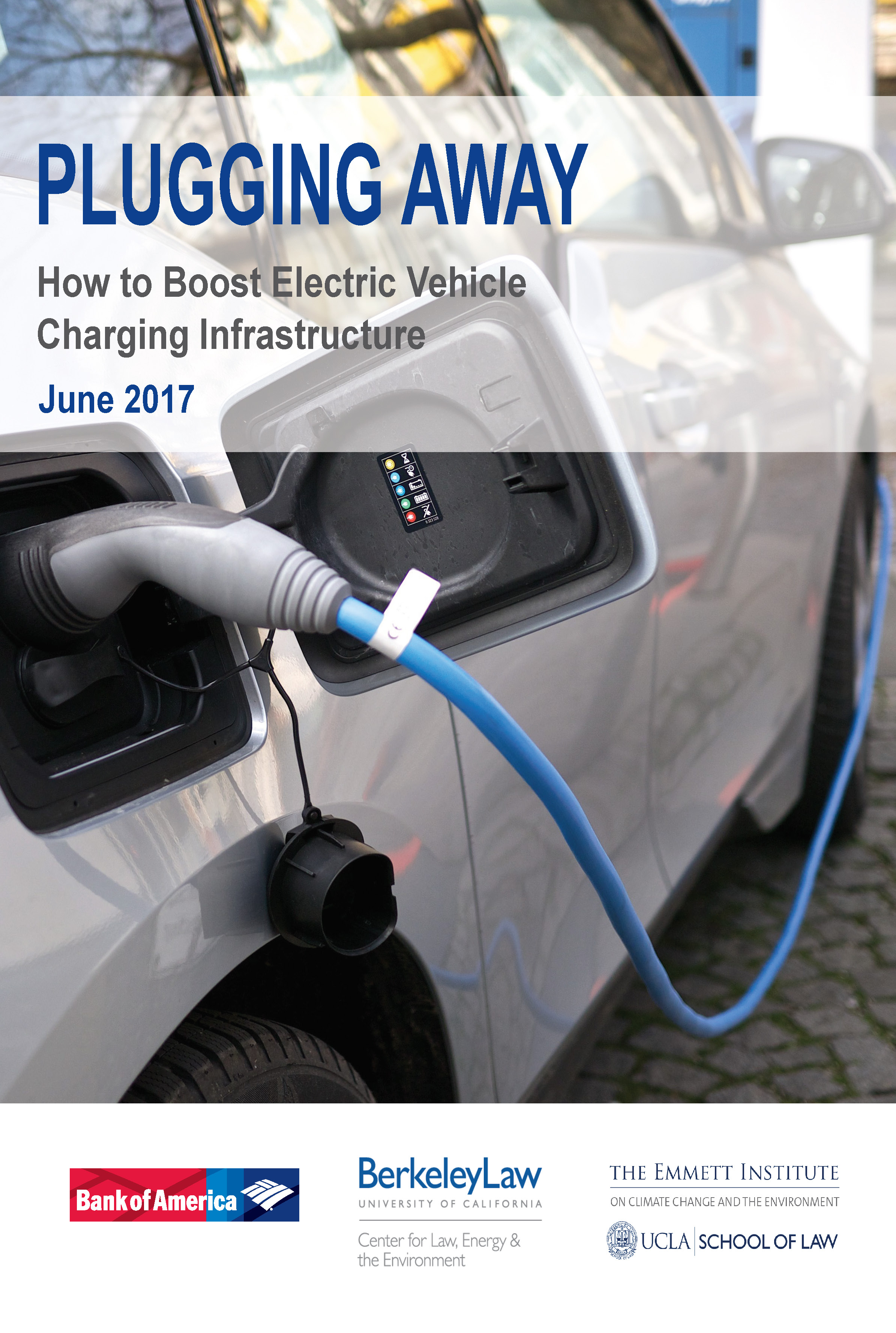 Plugging Away: How to Boost Electric Vehicle Charging Infrastructure (June 2017) (PDF – 2.7 MB)
Plugging Away: How to Boost Electric Vehicle Charging Infrastructure (June 2017) (PDF – 2.7 MB)
California will need widespread consumer adoption of electric vehicles (EV) in order to achieve the state’s environmental and energy goals. But achieving these goals will require a significant boost to EV charging infrastructure, particularly in workplaces, multi-unit dwellings, and fast charge “plazas.”
Key policy recommendations: expanded utility investments, at least up to the wiring of new charging stations; reform of commercial electricity rates to encourage more optimal charging times and locations based on grid needs; and expedited permitting and energy data access for charging stations in the most strategic locations to boost EV adoption.
 Planting Fuels: How California Can Boost Local, Low-Carbon Biofuel Production (December 2015) (PDF – 1.7 MB)
Planting Fuels: How California Can Boost Local, Low-Carbon Biofuel Production (December 2015) (PDF – 1.7 MB)
Transportation fuels from fossil sources represent the single largest source of carbon emissions in California. Low-carbon biofuels, which are derived from a variety of agricultural sources (such as corn, sugarcane, and canola), algae, food waste, and forest residue, among other sources, reduces petroleum fuel consumption as a substitute fuel. Yet California is missing opportunities to produce more of this biofuel locally, with attendant environmental and economic benefits.
Key policy recommendations: greater state support (such as utilizing cap-and-trade auction revenue) for in-state production with accurate accounting for the total carbon emissions reductions, financial incentives for automakers and gas stations to sell greater amounts of low-carbon biofuels and higher blend rates, and improved access to in-state feedstock production, particularly on idled farmland and forest lands to reduce wildfire risk.
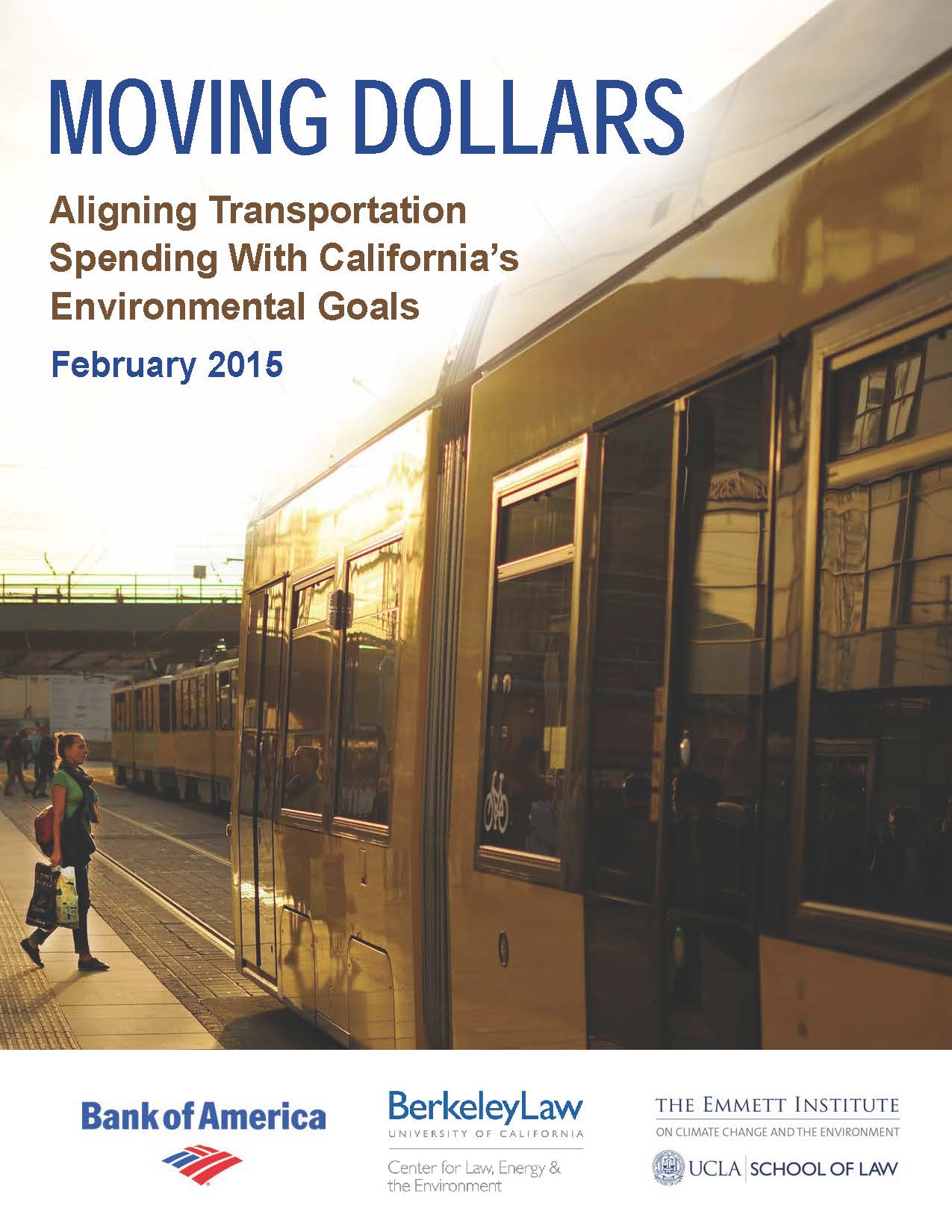 Moving Dollars: Aligning Transportation Spending With California’s Environmental Goals (February 2015) (PDF – 2.0 MB)
Moving Dollars: Aligning Transportation Spending With California’s Environmental Goals (February 2015) (PDF – 2.0 MB)
California’s state, regional and local governments spend roughly $28 billion each year on transportation, with the majority of the funding for highways and other auto-oriented infrastructure. Yet state laws related to greenhouse gas reduction, more compact real estate development, and multimodal transportation options, such as walking and biking, necessitate reductions in vehicle miles traveled.
Key policy recommendations: State-developed project performance standards to ensure new transportation projects meet various sustainability metrics, a greater percentage of transportation dollars directed to maintenance of existing infrastructure (including “complete streets” options), and improved transparency and decision-making in allocating transportation funds.
 A High Speed Foundation: How to Build a Better California Around High Speed Rail (August 2013) (PDF – 3.41 MB)
A High Speed Foundation: How to Build a Better California Around High Speed Rail (August 2013) (PDF – 3.41 MB)
California will soon begin construction of a proposed high speed rail system in the San Joaquin Valley, which will ultimately connect to Los Angeles and San Francisco. If implemented poorly, however, the system could lead to unchecked development in the Valley that could increase traffic, exacerbate the loss of farmland, and generate more air pollution.
Key policy recommendations: a Valley-wide collaborative to create a plan for economic growth and environmental preservation around the high speed rail network, support for local planning and mitigation efforts to implement it, and new financing mechanisms to catalyze private investment in station-connected development.
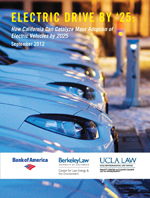 Electric Drive by ’25: How California Can Catalyze Mass Adoption of Electric Vehicles by 2025 (September 2012) (PDF – 1.77 MB)
Electric Drive by ’25: How California Can Catalyze Mass Adoption of Electric Vehicles by 2025 (September 2012) (PDF – 1.77 MB)
Long term, mass consumer adoption of electric vehicles will help California meet its renewable energy and greenhouse gas goals while boosting the economy with domestically produced fuel (in the form of electricity) and sales from California-based electric vehicle companies and suppliers.
Key policy recommendations: Industry and policy-maker coordinated education and outreach campaign about the consumer benefits of electric vehicle technology, reduced taxes and fees to lower the upfront cost of the vehicles, and a well-planned and coordinate public charging infrastructure.
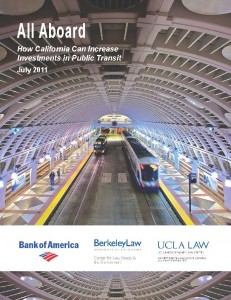 All Aboard: How California Can Increase Investments in Public Transportation (July 2011) ) (PDF – 6.07 MB)
All Aboard: How California Can Increase Investments in Public Transportation (July 2011) ) (PDF – 6.07 MB)
A well-funded and comprehensive public transit system in California could help the state reduce greenhouse gas emissions associated with the driving and save residents and businesses time and money.
Key policy recommendations: State policies that lower the threshold for voter approval of transit tax measures, authorization of tax increment financing for transit improvements, better land use surrounding transit stations, and more efficient use of existing transit resources and infrastructure development.
![]()
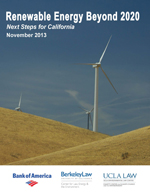 Renewable Energy Beyond 2020: Next Steps for California (November 2013) (PDF – 2.38 MB)
Renewable Energy Beyond 2020: Next Steps for California (November 2013) (PDF – 2.38 MB)
California is on pace to meet its goal of securing 33 percent of the state’s electricity from renewable sources like solar and wind by 2020, but energy experts report that the in-state market for renewable energy will lose momentum without new policies to encourage deployment beyond 2020.
Key policy recommendations: a new renewable energy target for 2030 that accounts for greenhouse gas emissions and tracks the state’s long-term climate change goal, comprehensive planning for renewable deployment to occur in the most efficient and cost-effective manner, incentives to encourage utilities and renewable developers to realize this vision.
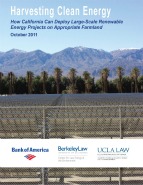 Harvesting Clean Energy: How California Can Deploy Large-Scale Renewable Energy Projects on Appropriate Farmland (October 2011) (PDF – 7.47 MB)
Harvesting Clean Energy: How California Can Deploy Large-Scale Renewable Energy Projects on Appropriate Farmland (October 2011) (PDF – 7.47 MB)
California will need to steer the development of large-scale renewable energy facilities on agricultural land toward lands that do not deplete the state’s prime agricultural and biological resources.
Key policy recommendations: develop criteria for the most suitable agricultural lands for renewable energy deployment, expedite environmental review and endangered species permitting for projects on these lands, and coordinate state and local land use planning and transmission investments to encourage development on these sites.
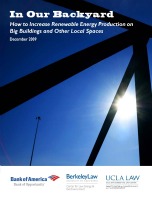 In Our Backyard: How to Increase Renewable Energy Production on Big Buildings and Other Local Spaces (December 2009) (PDF – 4.34 MB)
In Our Backyard: How to Increase Renewable Energy Production on Big Buildings and Other Local Spaces (December 2009) (PDF – 4.34 MB)
To meet renewable energy goals, California will need to formulate strategies for greater deployment of renewable energy technologies on businesses and public properties.
Key policy recommendations: Expanded feed-in tariff and net metering policies and state legislation to deploy more renewable energy technologies on state highways, the aqueduct, and other public spaces.
![]()
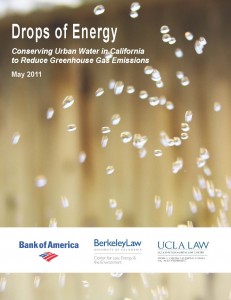 Drops of Energy: Conserving Urban Water in California to Reduce Greenhouse Gas Emissions (May 2011) (PDF – 8.66 MB)
Drops of Energy: Conserving Urban Water in California to Reduce Greenhouse Gas Emissions (May 2011) (PDF – 8.66 MB)
Because pumping, treating, and using water involves energy consumption, conserving water in California will reduce greenhouse gas emissions and constitute a critical adaptation strategy as the state faces a likely future of fewer water supplies and more people
Key policy recommendations: Improved state policies to provide more accurate data on water usage, on-bill financing and a public goods charge on water usage to finance efficiency measures, and a coordinated statewide outreach campaign to promote water efficiency among consumers.
![]()
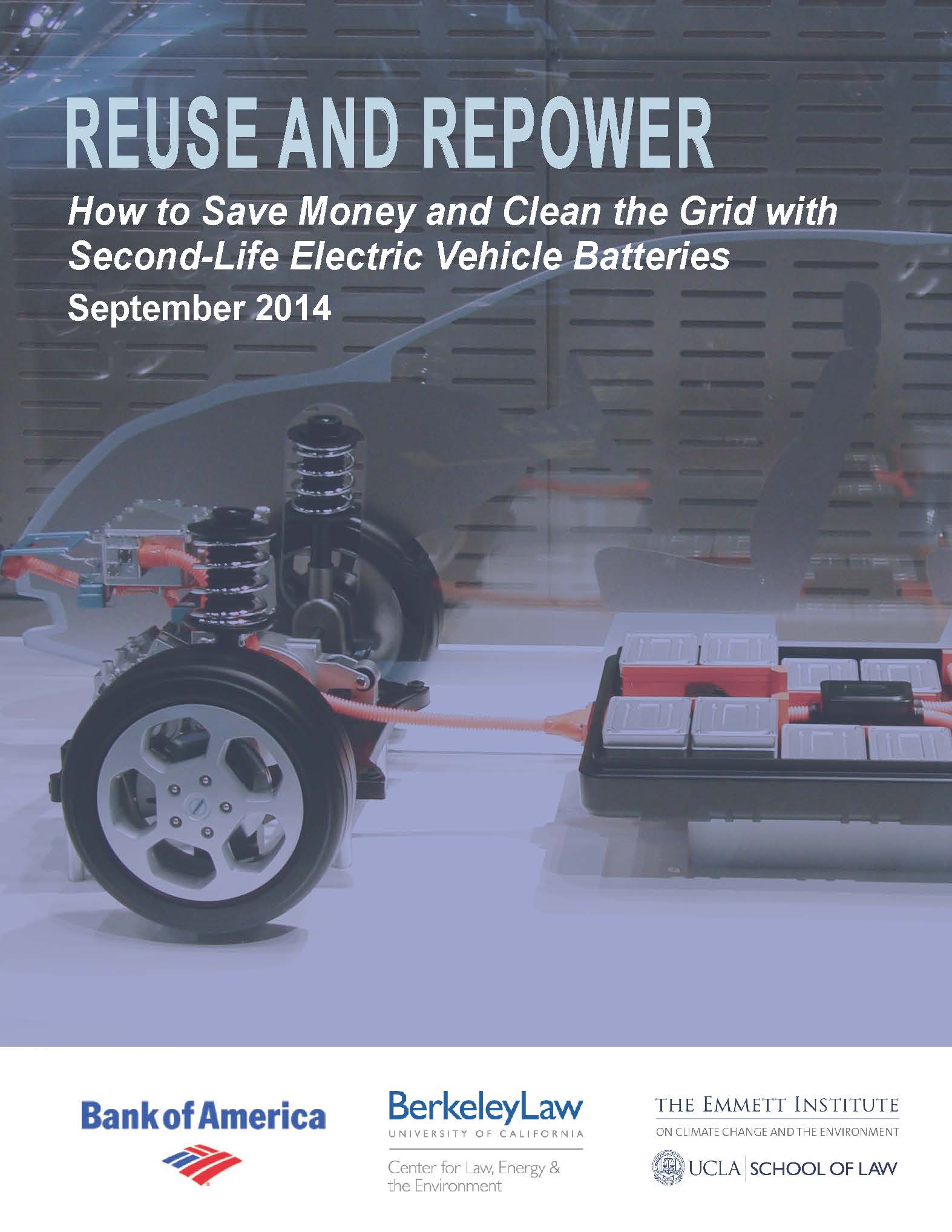 Reuse and Repower: How to Save Money and Clean the Grid with Second-Life Electric Vehicle Batteries (September 2014) (PDF – 2.5 MB)
Reuse and Repower: How to Save Money and Clean the Grid with Second-Life Electric Vehicle Batteries (September 2014) (PDF – 2.5 MB)
Electric vehicle batteries that no longer have convenient range in the vehicle can still be repurposed and stacked to provide inexpensive energy storage to help decarbonize the electricity sector.
Key policy recommendations: support for more second-life battery demonstrations, regulatory reform for rules that inadvertently prevent investment in this potential market, clearer liability to determine who pays in the event of damages from second-life battery usage, and more data sharing on electric vehicle battery life both in the vehicle and in grid applications.
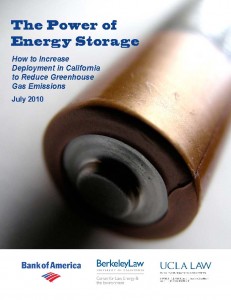 The Power of Energy Storage: How to Increase Deployment in California to Reduce Greenhouse Gas Emissions (July 2010) (PDF – 6.2 MB)
The Power of Energy Storage: How to Increase Deployment in California to Reduce Greenhouse Gas Emissions (July 2010) (PDF – 6.2 MB)
Energy storage, through technologies such as batteries, flywheels, and compressed air, will be critical to integrating intermittent renewable energy, like solar or wind, into the grid.
Key policy recommendations: Revised utility and grid operator procurement policies that allow competition from energy storage technologies, tax benefits for energy storage projects, and the creation of a separate asset class for energy storage.
![]()
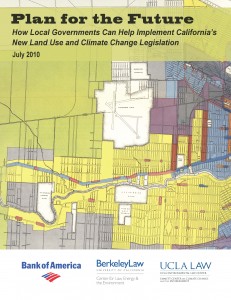 Plan for the Future: How Local Governments Can Help Implement California’s New Land Use and Climate Change Legislation (July 2010) (PDF – 18.9 MB)
Plan for the Future: How Local Governments Can Help Implement California’s New Land Use and Climate Change Legislation (July 2010) (PDF – 18.9 MB)
Many local governments need assistance developing the land use plans necessary to implement SB 375, the state’s landmark law that coordinates transportation and land use planning at the regional level.
Key policy recommendations: Improved public outreach to encourage citizen participation in developing a vision for population growth and transportation in local communities, expanded financing for local government planning efforts, and streamlined local land use codes and sharing of best practices.
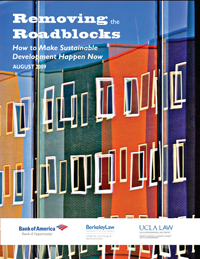 Removing the Roadblocks: How to Make Sustainable Development Happen Now (August 2009) (PDF – 7.54 MB)
Removing the Roadblocks: How to Make Sustainable Development Happen Now (August 2009) (PDF – 7.54 MB)
California needs more sustainable real estate development, which includes compact housing, retail, and commercial projects that allow residences to walk and take transit for regular trips, in order to meet growing market demand and reduce the greenhouse gas emissions associated with driving.
Key policy recommendations: Tax-increment financing for transit-oriented development, differential impact fees on sprawl and sustainable development, and more funding for local government planning.
![]()
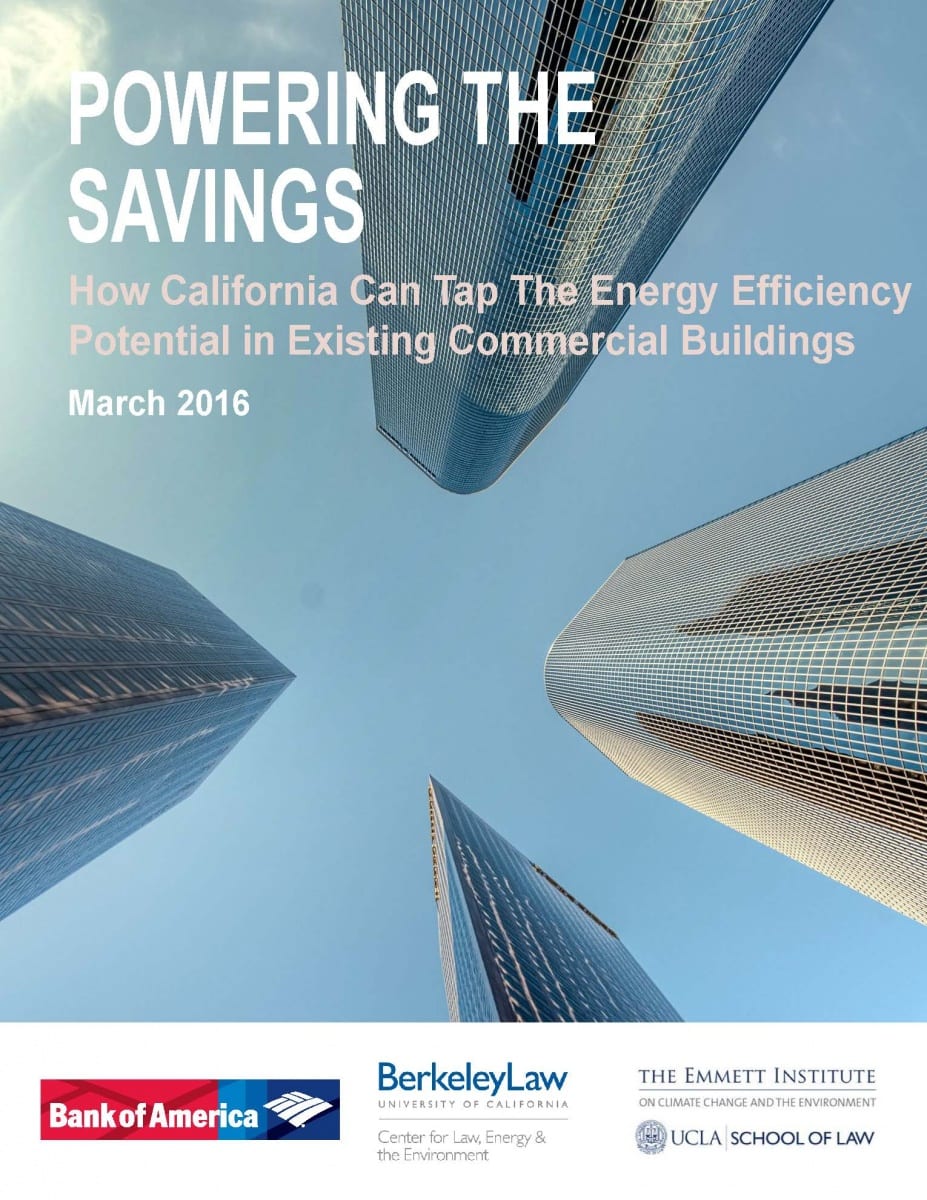 Powering the Savings: How California Can Tap the Energy Efficiency Potential in Existing Commercial Buildings (March 2016) (PDF – 4.1 MB)
Powering the Savings: How California Can Tap the Energy Efficiency Potential in Existing Commercial Buildings (March 2016) (PDF – 4.1 MB)
Making existing buildings more energy efficient is one of the most cost-effective ways to reduce emissions and save building owners money. Fixes like improved lighting through LED fixtures and more efficient heating, ventilation and air conditioning can yield returns relatively quickly, despite higher upfront costs. Yet California’s energy efficiency efforts to date have not kept pace with increasing demand, primarily because they rely largely on voluntary, consumer-financed programs.
Key recommendations: aggressive utility pilot projects using advanced technologies and methodologies that can measure and therefore meter the energy saved due to specific retrofit measures; state programs that can rely on these methods to offer pay-for-performance efficiency incentives that can encourage large-scale, capital market investment.
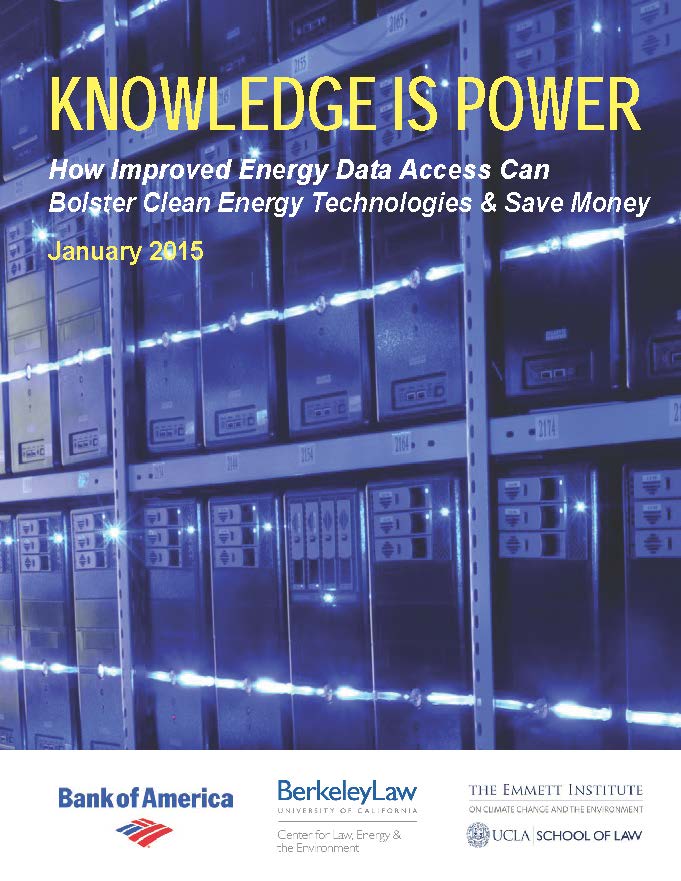 Knowledge Is Power: How Improved Energy Data Access Can Bolster Clean Energy Technologies & Save Money (January 2015) (PDF – 1.9 MB)
Knowledge Is Power: How Improved Energy Data Access Can Bolster Clean Energy Technologies & Save Money (January 2015) (PDF – 1.9 MB)
Greater access to energy information could help customers save money by improving their energy efficiency, while clean technology companies, including renewable energy and energy storage developers, smart grid software and hardware purveyors, and electric vehicle automakers could use aggregated, anonymous utility and customer group data to improve their services and boost market share.
Key policy recommendations: Cost recovery mechanisms for utilities to collect and share anonymized energy and market data and historic building energy audits, development and maintenance of secure energy data centers, and establishment of customers’ right to improved access to their usage data in an easily organized, standardized format.
 Saving Energy: How California Can Launch a Statewide Retrofit Program for Existing Residences and Small Businesses (May 2010) (PDF – 7.43 MB)
Saving Energy: How California Can Launch a Statewide Retrofit Program for Existing Residences and Small Businesses (May 2010) (PDF – 7.43 MB)
Many of California’s 13 million residences and existing buildings could achieve significant energy conservation and greenhouse gas emission reductions through retrofitting, including adopting low-tech solutions such as “cool roofs,” improved heating and cooling systems, and basic insulation.
Key policy recommendations: Expanded support of retrofit financing programs, development of retrofit workforce licensing standards, enhanced mapping of housing stock and climate zones, and statewide marketing campaign to promote retrofits.
![]()
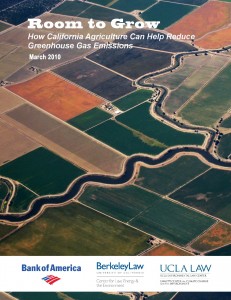 Room to Grow: How California Agriculture Can Help Reduce Greenhouse Gas Emissions (March 2010) (PDF – 10.8 MB)
Room to Grow: How California Agriculture Can Help Reduce Greenhouse Gas Emissions (March 2010) (PDF – 10.8 MB)
Agricultural businesses can play a key role in reducing greenhouse gas emissions associated with farming in California, while saving themselves money in the process.
Key policy recommendations: Increased on-farm renewable energy through expansion of the feed-in tariff and net metering programs, more efficient fertilizer usage and livestock feed, and regulatory processes to encourage innovation.


